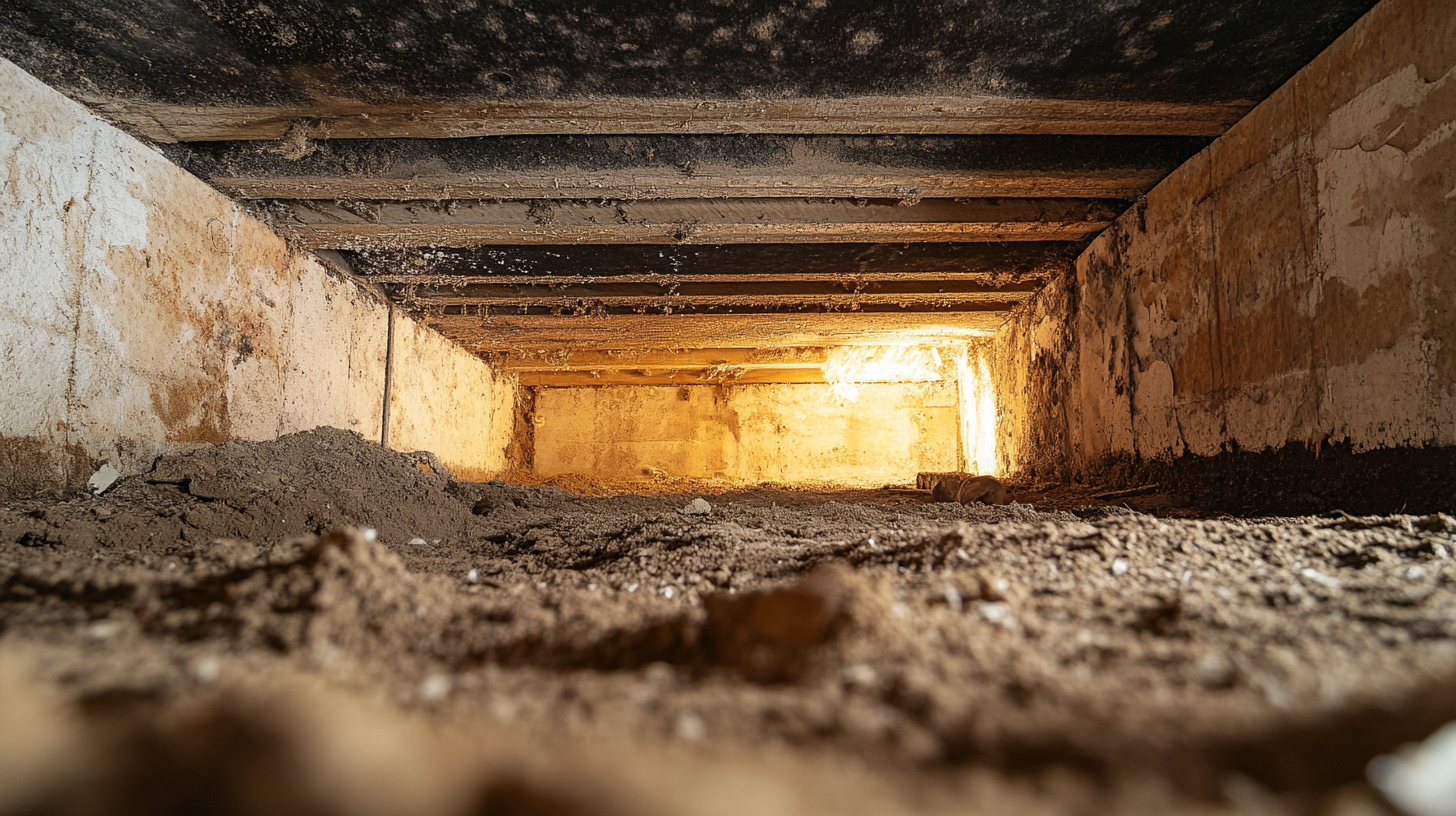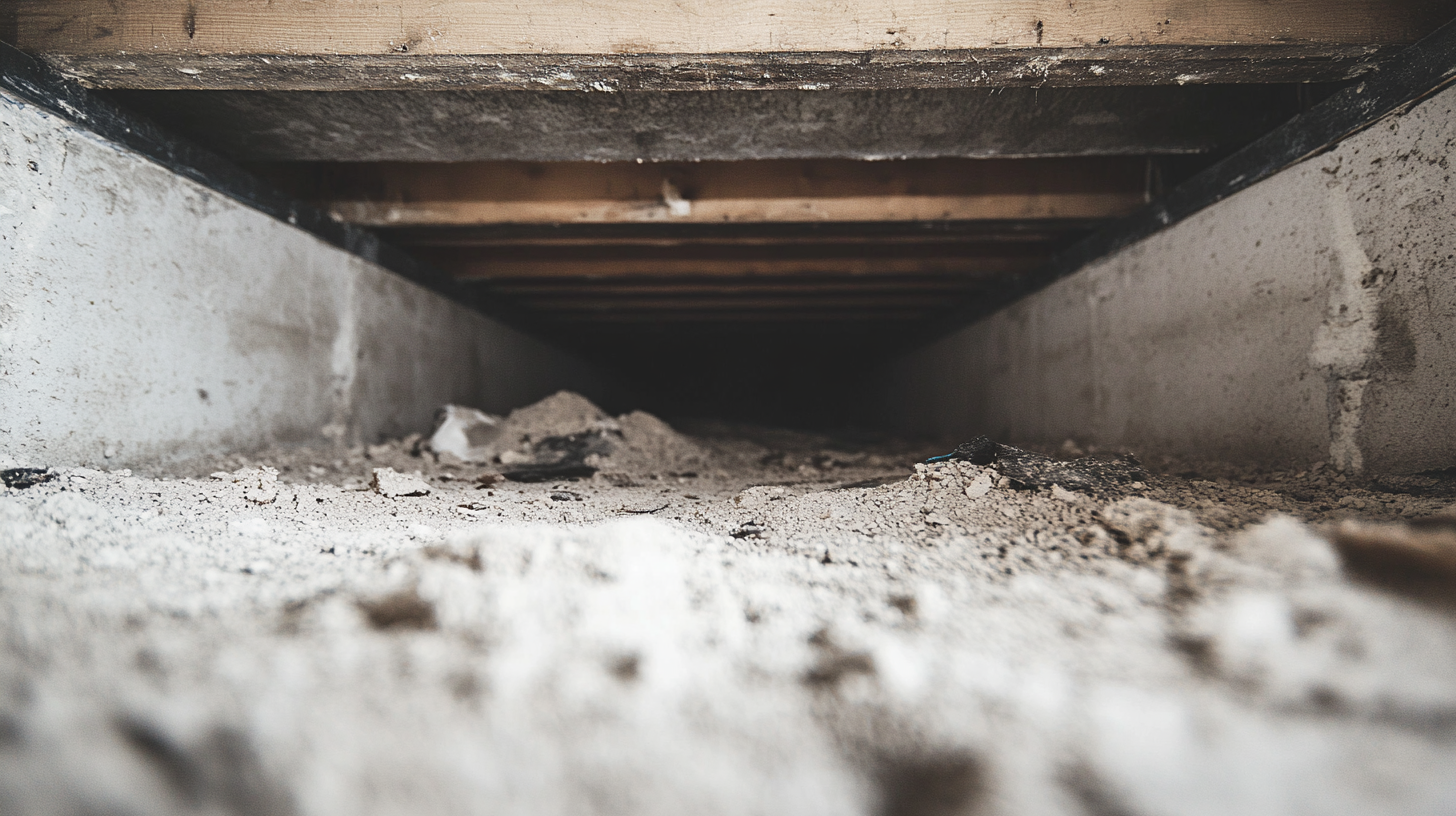Odor Neutralization Techniques for Large Commercial Spaces

Maintaining fresh air and eliminating odors in large commercial spaces such as malls, offices, hotels, and industrial facilities presents unique challenges. These environments experience high foot traffic, varied activities, and complex ventilation systems, all of which can contribute to lingering odors and poor air quality. From food courts and restrooms to office kitchens and industrial processes, each area poses distinct odor issues that need targeted solutions. Ensuring a clean, fresh-smelling atmosphere is crucial for creating a pleasant experience for customers, guests, and employees, while also maintaining a professional and hygienic environment. Achieving this requires a combination of effective odor neutralization methods, proper ventilation, and ongoing maintenance to tackle odors at their source.
Common Odor Challenges in Large Commercial Spaces
Odor control in large commercial spaces can be particularly difficult due to the complex nature of these environments. High foot traffic, large open areas, and multiple sources of odors contribute to persistent smells that are hard to eliminate.
Compounding the issue is the often limited or inefficient ventilation, which allows odors to linger and spread. In spaces like malls, hotels, offices, and industrial facilities, tackling these challenges requires an understanding of the unique odor sources and targeted solutions for effective neutralization.
Sources of Odors in Commercial Settings
Food Services and Restaurants
Commercial spaces with food services, such as food courts or in-house restaurants, frequently deal with strong cooking smells, grease, and food waste. These odors can permeate beyond the kitchen and dining areas, especially in open-plan environments like malls. The combination of lingering food smells and improper waste disposal can lead to persistent odors that are difficult to neutralize without effective ventilation and regular cleaning.
Restrooms
Restrooms in commercial spaces experience high usage, leading to a build-up of odors from waste, dampness, and cleaning chemicals. Insufficient airflow, especially in larger buildings, can cause odors to spread throughout the area. Restroom odors are often exacerbated by poor maintenance or overcrowded facilities, making regular cleaning and odor control essential for maintaining a pleasant environment.
Industrial Workspaces
In industrial or manufacturing settings, odors often come from chemical fumes, solvents, and byproducts from machinery and production processes. These strong smells can pose a health hazard and impact air quality if not properly managed. Ventilation is key in industrial workspaces, but due to the sheer size of these areas, odors can still persist and spread.
Garbage and Waste Areas
Garbage and waste collection points in commercial spaces, whether inside buildings or near entrances, are a frequent source of odors. Poor waste management or infrequent removal can cause trash smells to accumulate and spread, especially in busy areas with regular foot traffic. Effective odor neutralization is crucial for maintaining a clean environment near these areas.
HVAC Systems
Large commercial spaces often rely on complex HVAC systems to manage airflow, but these systems can also become a source of odors. Mold, bacteria, or dust buildup inside large ventilation systems can cause unpleasant smells to circulate throughout the space. Regular HVAC maintenance and air filtration are critical to preventing odors from spreading through the building's air system.
By understanding the various sources of odors in commercial spaces, businesses can implement targeted strategies for odor control, ensuring a fresher, more welcoming environment for customers, employees, and visitors.
Key Factors to Consider When Choosing Odor Neutralization Techniques for Large Spaces
Effectively managing odors in large commercial spaces requires more than just simple air fresheners. The size, layout, traffic volume, and specific environmental and health concerns all play significant roles in determining the most appropriate odor neutralization techniques. Understanding these key factors can help businesses maintain a fresh, inviting, and compliant atmosphere.
1. Size and Layout of the Space
Why it matters:
In large, open spaces such as malls, office buildings, or industrial facilities, odors can spread quickly and become difficult to contain. The sheer size of these areas often requires more powerful and widespread solutions compared to smaller, enclosed spaces where localized methods might suffice. Proper odor control must account for airflow and the unique layout of the space.
Best practices:
- Opt for centralized systems for consistent coverage: Large commercial spaces can benefit from HVAC-integrated odor neutralization systems. These solutions can treat the entire space by dispersing neutralizing agents through the building's existing ventilation, ensuring consistent odor control throughout.
- Zoning: Divide large spaces into sections based on function. For example, different odor control techniques might be needed in kitchens, restrooms, or common areas. By zoning the space, you can apply specific solutions for the unique challenges each area presents.
2. Frequency and Volume of Traffic
Why it matters:
High-traffic areas such as malls, restaurants, and restrooms generate a constant flow of odors due to the frequent use by customers, employees, or visitors. In these environments, odors accumulate faster, requiring continuous attention to avoid unpleasant smells.
Best practices:
- Regular maintenance and cleaning: To prevent odors from building up in high-traffic areas, consistent cleaning schedules are essential. This includes daily cleaning of restrooms, food service areas, and other spaces that experience high odor production.
- Use automatic, continuous systems: In zones with heavy foot traffic, consider installing automatic odor control systems that work continuously, such as timed air fresheners, odor-absorbing gels, or air purifiers. These systems can help neutralize smells before they become overwhelming.
3. Health and Safety Regulations
Why it matters:
Certain commercial spaces, such as hospitals, food preparation areas, and healthcare facilities, must comply with strict health and safety regulations regarding air quality and chemical use. Ensuring that odor control methods meet these standards is critical to maintaining a safe and compliant environment.
Best practices:
- Choose non-toxic, hypoallergenic solutions: For spaces with stringent health codes, such as hospitals or food service environments, it is essential to use non-toxic, hypoallergenic odor neutralizers. These solutions ensure the safety of both employees and visitors while maintaining a high level of air quality.
- Look for HEPA filtration systems: In spaces that require medical-grade cleanliness, such as healthcare facilities, using HEPA filtration systems is a must. These systems effectively trap particles and odors, improving air quality and ensuring compliance with health regulations.
4. Environmental and Sustainability Considerations
Why it matters:
Many businesses are increasingly focused on sustainability and reducing their environmental impact. Choosing eco-friendly odor neutralization methods not only aligns with green business goals but also reduces the use of chemicals and minimizes waste.
Best practices:
- Invest in sustainable technologies: Air purifiers, natural deodorizers, and reusable odor control products offer environmentally friendly alternatives to traditional chemical-based solutions. These methods help improve air quality while reducing the reliance on disposable products.
- Reduce waste and pollution: Avoid using single-use chemical sprays or disposable odor control products that contribute to pollution. Instead, opt for long-lasting, refillable, or reusable solutions to minimize environmental impact.
By considering these factors space size, traffic volume, health and safety regulations, and environmental sustainability businesses can select the most effective and appropriate odor neutralization techniques, ensuring long-term freshness in large commercial spaces.
Natural Odor Neutralization Techniques for Large Commercial Spaces
In large commercial spaces, managing odors naturally is not only effective but also aligns with environmentally conscious practices. Natural odor neutralization techniques offer sustainable, chemical-free solutions that improve air quality without the use of harsh chemicals. Here are some of the most effective natural methods for neutralizing odors in large commercial environments.
1. Activated Charcoal – Absorbing Odors Across Large Areas
How it works:
Activated charcoal is a powerful natural odor neutralizer that works by absorbing odor-causing particles from the air. It doesn’t release any chemicals or fragrances, making it ideal for spaces where neutralizing odors without adding scents is important. The porous surface of activated charcoal traps odors, leaving the air cleaner and fresher.
Best for:
- Garbage collection areas, restrooms, and storage rooms: These high-odor zones benefit from activated charcoal's ability to absorb persistent smells without needing frequent replacements.
How to use:
- Place large charcoal filters in key odor zones: Position activated charcoal filters near garbage rooms, food prep areas, or restrooms to absorb odors at the source. These filters are particularly effective in areas where waste is collected or where strong food odors accumulate.
- Install charcoal-based air filters in HVAC systems: For continuous odor absorption throughout large spaces, install charcoal-based filters in your HVAC system. This ensures that odors are neutralized as air circulates through the building, maintaining a clean atmosphere across all areas.
2. Essential Oil Diffusers – A Natural Way to Neutralize and Freshen Air
How it works:
Essential oils such as eucalyptus, lemon, or lavender naturally eliminate bacteria and odors while providing a pleasant, fresh scent. These oils act as natural disinfectants, neutralizing odor-causing agents and offering a light fragrance that enhances the environment without being overpowering.
Best for:
- Retail spaces, hotel lobbies, and office areas: Essential oil diffusers are ideal for commercial spaces where a welcoming, fresh-smelling environment is key. The natural scents of essential oils enhance the atmosphere, making these spaces more pleasant for customers and employees alike.
How to use:
- Use industrial-sized diffusers connected to air ducts: For large commercial areas, opt for industrial-sized essential oil diffusers that can be connected to air ducts or HVAC systems. This ensures even distribution of the essential oils across large spaces, keeping the air consistently fresh.
- Choose pet-safe and hypoallergenic oils: In businesses that cater to sensitive populations, such as spas, hospitals, or wellness centers, select hypoallergenic, non-toxic essential oils. Oils like lavender and chamomile are both calming and safe for a wide range of environments, including those frequented by individuals with allergies or respiratory concerns.
3. Houseplants – Natural Air Purifiers for Indoor Spaces
How it works:
Certain houseplants, such as spider plants, peace lilies, and bamboo palms, are natural air purifiers. They absorb toxins and pollutants from the air while also helping to control odors. These plants improve indoor air quality by converting carbon dioxide into oxygen and filtering out harmful substances, making them a perfect addition to commercial spaces.
Best for:
- Lobbies, office spaces, or areas with poor ventilation: Houseplants are ideal for spaces that experience less natural air circulation, as they work to improve air quality while adding aesthetic appeal to indoor environments.
How to use:
- Place large potted plants strategically around high-traffic areas: In large spaces, position potted plants near entrances, lobbies, or high-traffic areas to maximize their air-purifying capabilities. The presence of greenery also creates a welcoming, relaxing atmosphere.
- Opt for plants known for their air-purifying qualities: Choose plants specifically known for their ability to absorb toxins and improve air quality, such as snake plants, spider plants, or peace lilies. These plants require minimal maintenance and can significantly boost both air quality and overall aesthetics in commercial spaces.
By implementing these natural odor neutralization techniques, businesses can maintain a clean and fresh environment in large commercial spaces while also prioritizing sustainability and air quality. These methods not only effectively neutralize odors but also enhance the visual appeal of the space, creating a more inviting atmosphere for employees and customers alike.
Chemical Odor Neutralization Techniques for Commercial Use
When managing odors in large commercial spaces, chemical solutions are often required to provide fast and powerful odor control. These products are designed to neutralize or mask odors efficiently, making them essential in high-traffic environments such as restrooms, kitchens, and waste collection areas. Below are two effective chemical odor neutralization techniques widely used in commercial settings.
1. Commercial-Grade Air Fresheners and Deodorizers
How they work:
Commercial-grade air fresheners and deodorizers are formulated to either mask unpleasant smells with fragrance or neutralize them by chemically interacting with odor-causing particles. These products are highly effective in environments with constant foot traffic, where odors can accumulate quickly and require immediate attention.
Best for:
- Restrooms, waste areas, and kitchens: These spaces generate strong, persistent odors from waste, food, or high usage, making them ideal candidates for the fast-acting properties of chemical deodorizers and air fresheners.
How to use:
- Install automatic air freshener dispensers: For continuous odor control in restrooms, waste collection points, or hallways, use automatic air freshener dispensers. These devices release controlled bursts of fragrance at set intervals, ensuring consistent odor neutralization throughout the day without requiring constant manual application.
- Use surface sprays for immediate odor control: In areas like cafeterias, gym locker rooms, or kitchen prep spaces, surface sprays can be applied directly to odor hotspots, such as countertops or bins, for instant odor reduction. These sprays are ideal for quick fixes when strong smells become noticeable during daily operations.
2. Enzyme-Based Cleaners for Persistent Odors
How they work:
Enzyme-based cleaners target the source of odors by breaking down the organic material responsible for the smell. These enzymes digest substances like food waste, grease, and bacteria, eliminating odors at their root rather than just masking them. This makes enzyme cleaners particularly effective for areas where organic matter builds up, such as kitchens and garbage zones.
Best for:
- Kitchens, food courts, and garbage areas: Commercial kitchens, food prep areas, and trash collection zones frequently deal with lingering odors from organic waste. Enzyme-based cleaners provide a deep clean, ensuring that bacteria and food residues are broken down to prevent long-term odor issues.
How to use:
- Apply enzyme cleaners directly to surfaces where odors originate: For trash cans, floors, and kitchen surfaces, apply enzyme-based cleaners to areas where food waste, spills, or grease tend to accumulate. Let the cleaner sit for a few minutes to allow the enzymes to work before wiping or rinsing.
- Use regularly in kitchens and dining areas: To prevent the buildup of odor-causing bacteria, regularly use enzyme cleaners in areas where food is prepared, stored, or disposed of. This proactive approach will help maintain a fresher environment and avoid the development of persistent odors over time.
By using commercial-grade air fresheners and enzyme-based cleaners, businesses can effectively manage odors in high-traffic or problem areas, ensuring a pleasant and hygienic atmosphere for both employees and customers. These chemical solutions offer powerful, reliable odor control that keeps large commercial spaces smelling clean and fresh.
Technological Odor Neutralization Solutions for Large Commercial Spaces
In large commercial spaces, technology-driven odor neutralization solutions offer powerful and efficient ways to manage air quality and eliminate unpleasant smells. These solutions are designed to handle large volumes of air and combat persistent odors, providing effective, long-term control for spaces like offices, malls, hotels, and industrial facilities. Below are three key technological approaches to odor control in large commercial environments.
1. HVAC Integrated Odor Control Systems
How they work:
HVAC integrated odor control systems are designed to filter out odors and distribute fresh air throughout large spaces by incorporating odor-neutralizing solutions directly into the building's ventilation system. As air circulates through the HVAC units, the filters remove odor-causing particles and improve air quality.
Best for:
- Large spaces like office buildings, malls, and hotels: These systems are ideal for maintaining consistent air quality and odor control in environments with high foot traffic and multiple rooms or sections.
How to use:
- Install odor-eliminating filters in HVAC units: By placing odor-neutralizing filters into HVAC systems, businesses can continuously filter out unwanted smells as air circulates. This ensures that the air remains clean and fresh throughout the day.
- Choose filters with carbon and HEPA technology: For optimal results, especially in spaces requiring high air quality standards (e.g., healthcare facilities, hotels), select filters with activated carbon to absorb odors and HEPA technology to trap airborne particles. This combination provides comprehensive air purification and odor neutralization.
2. Commercial-Grade Air Purifiers with HEPA and Carbon Filters
How they work:
Commercial-grade air purifiers equipped with HEPA and activated carbon filters offer a targeted approach to odor control. HEPA filters capture fine particles, including dust, pollen, and pet dander, while activated carbon filters absorb gaseous pollutants and neutralize odors from the air, ensuring cleaner, fresher air in high-traffic areas.
Best for:
- Offices, retail spaces, and public waiting areas: These air purifiers are ideal for spaces where maintaining a pleasant environment for employees and customers is essential.
How to use:
- Place air purifiers in strategic locations: Position air purifiers in key areas, such as near entrances, lobbies, or high-traffic zones, to effectively capture odors and improve air quality. In larger spaces, multiple purifiers may be needed to ensure adequate coverage.
- Ensure regular maintenance of filters: To maintain continuous odor control, clean or replace HEPA and carbon filters regularly according to the manufacturer’s instructions. This prevents the filters from becoming saturated and ensures that the purifiers operate at peak efficiency.
3. Ozone Generators – Effective for Tough Odors in Unoccupied Spaces
How they work:
Ozone generators produce ozone, a powerful oxidizing agent that breaks down odor-causing particles in the air. However, due to potential safety risks, these machines should only be used in unoccupied spaces, as ozone can be harmful to humans and pets when inhaled.
Best for:
- Overnight odor control in warehouses, garbage rooms, and large industrial spaces: Ozone generators are ideal for addressing severe, persistent odors, such as those caused by smoke, chemicals, or large amounts of waste, during periods when the space is not in use.
How to use:
- Use during off-hours when the space is empty: Ozone generators should be operated only when the area is unoccupied. Set the generator to run overnight or during other off-hours to remove tough odors without exposing employees or customers to ozone.
- Ensure proper ventilation after using ozone generators: After running the generator, ventilate the space thoroughly to allow any remaining ozone to dissipate before the area is occupied again. This step is crucial to prevent exposure to potentially harmful ozone levels.
By utilizing these advanced technological solutions, large commercial spaces can achieve effective odor control while maintaining high air quality standards. Whether through HVAC integration, air purifiers, or ozone generators, businesses can ensure a clean and pleasant environment for both employees and visitors.
FAQs
Contact Fast Response Cleaning & Restoration Today!
Fast Response Cleaning & Restoration will do everything we can to ensure your experience with us is excellent.
Request A FREE Estimate
Request A FREE Estimate Form
CHECKOUT RECENT POST



Have an Emergency? We're Here to Help!
When it comes to disaster cleanup, we are a seasoned veteran in the industry and have helped hundreds of property owners just like you.
Our disaster recovery teams are available 24-7 to quickly clean up and repair disasters of all types.
